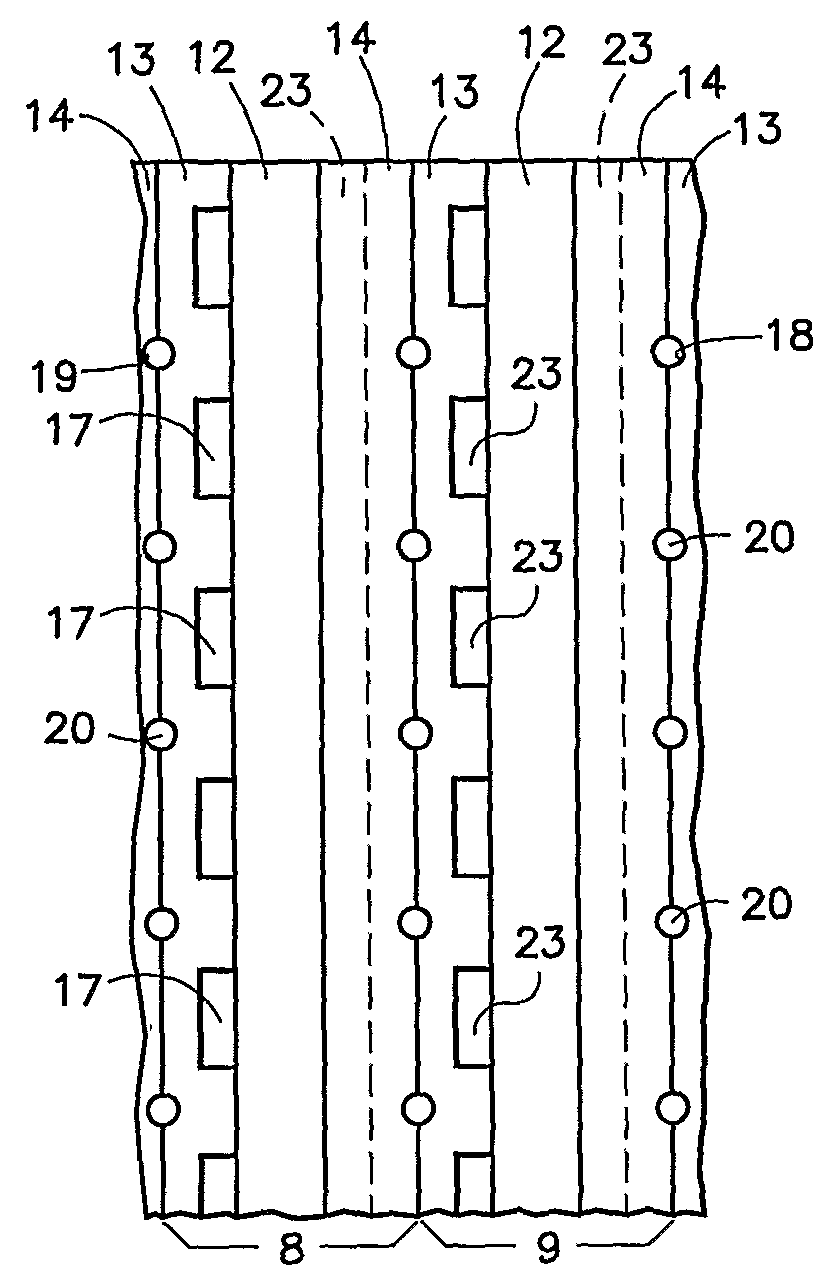Fuel Cell Employing Hydrated Non-Perfluorinated Hydrocarbon Ion Exchange Membrane
a technology of hydrocarbon ion exchange membrane and fuel cell, which is applied in the direction of fuel cell details, cell components, electrochemical generators, etc., can solve the problems of reducing fuel cell performance, reducing fuel cell efficiency, and high cost of membranes, so as to improve the tolerance to carbon monoxide, improve durability, and reduce the cost
- Summary
- Abstract
- Description
- Claims
- Application Information
AI Technical Summary
Benefits of technology
Problems solved by technology
Method used
Image
Examples
Embodiment Construction
[0021]Referring to FIG. 1, portions of a pair of fuel cells 8, 9 are illustrated. Each fuel cell has a unitized electrode assembly 12, a porous, hydrophilic fuel reactant gas flow field plate 13 and a porous, hydrophilic oxidant reactant gas flow field plate 14. The fuel reactant gas flow field plates 13 includes fuel flow channels 17 and grooves 18 which, with grooves 19 in the oxidant reactant gas flow field plates 14, form channels 20 for liquid water that hydrates the membrane and for removal of product water from the cathodes. The oxidant reactant gas flow field plates 14 have oxidant reactant gas flow field channels 23.
[0022]The channels 20 may be of large cross-section, sufficient to carry enough water for convectively cooling the fuel cells by transfer of sensible heat to the water. This may be achieved with a coolant pump, heat exchanger and controls, or this may be achieved in a passive system, having no water pump and relying on convective or other passive water circulati...
PUM
| Property | Measurement | Unit |
|---|---|---|
| voltage | aaaaa | aaaaa |
| hydrophilic | aaaaa | aaaaa |
| current densities | aaaaa | aaaaa |
Abstract
Description
Claims
Application Information
 Login to View More
Login to View More - R&D
- Intellectual Property
- Life Sciences
- Materials
- Tech Scout
- Unparalleled Data Quality
- Higher Quality Content
- 60% Fewer Hallucinations
Browse by: Latest US Patents, China's latest patents, Technical Efficacy Thesaurus, Application Domain, Technology Topic, Popular Technical Reports.
© 2025 PatSnap. All rights reserved.Legal|Privacy policy|Modern Slavery Act Transparency Statement|Sitemap|About US| Contact US: help@patsnap.com


